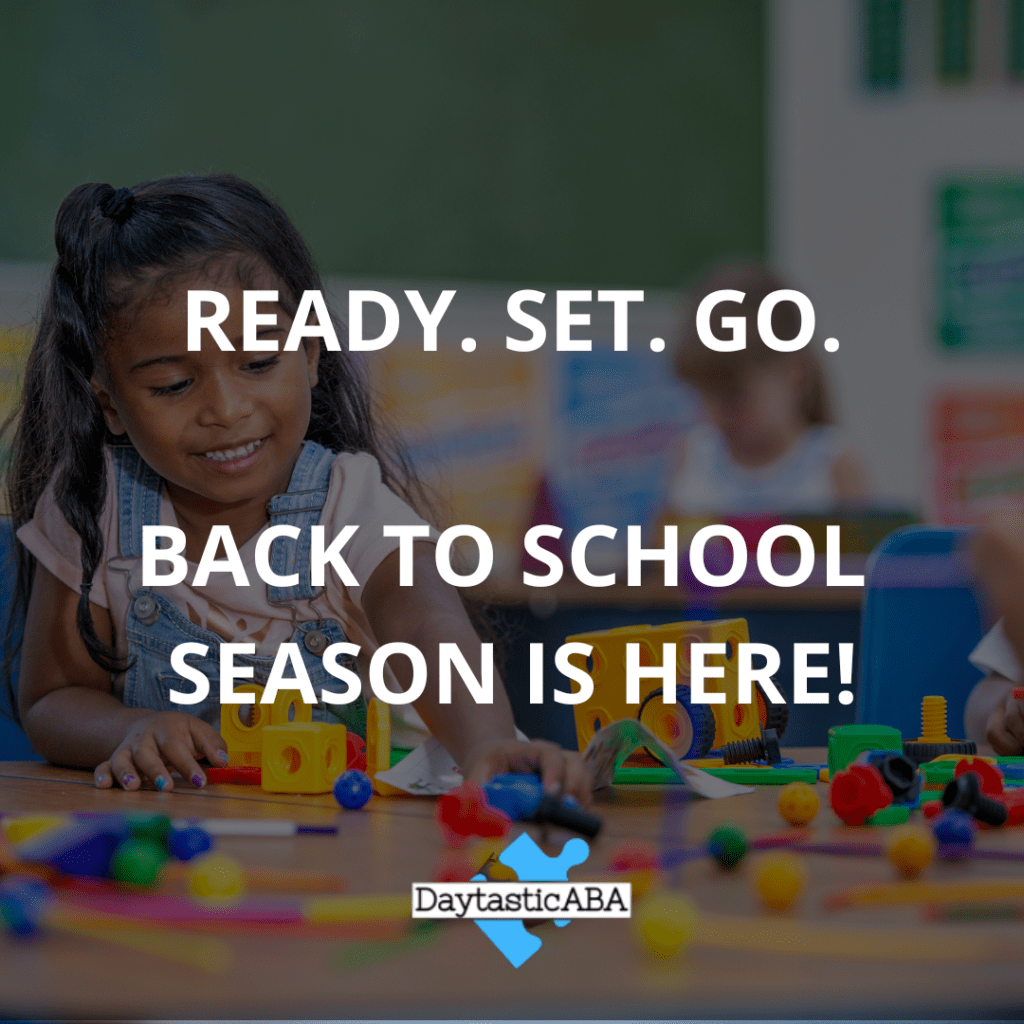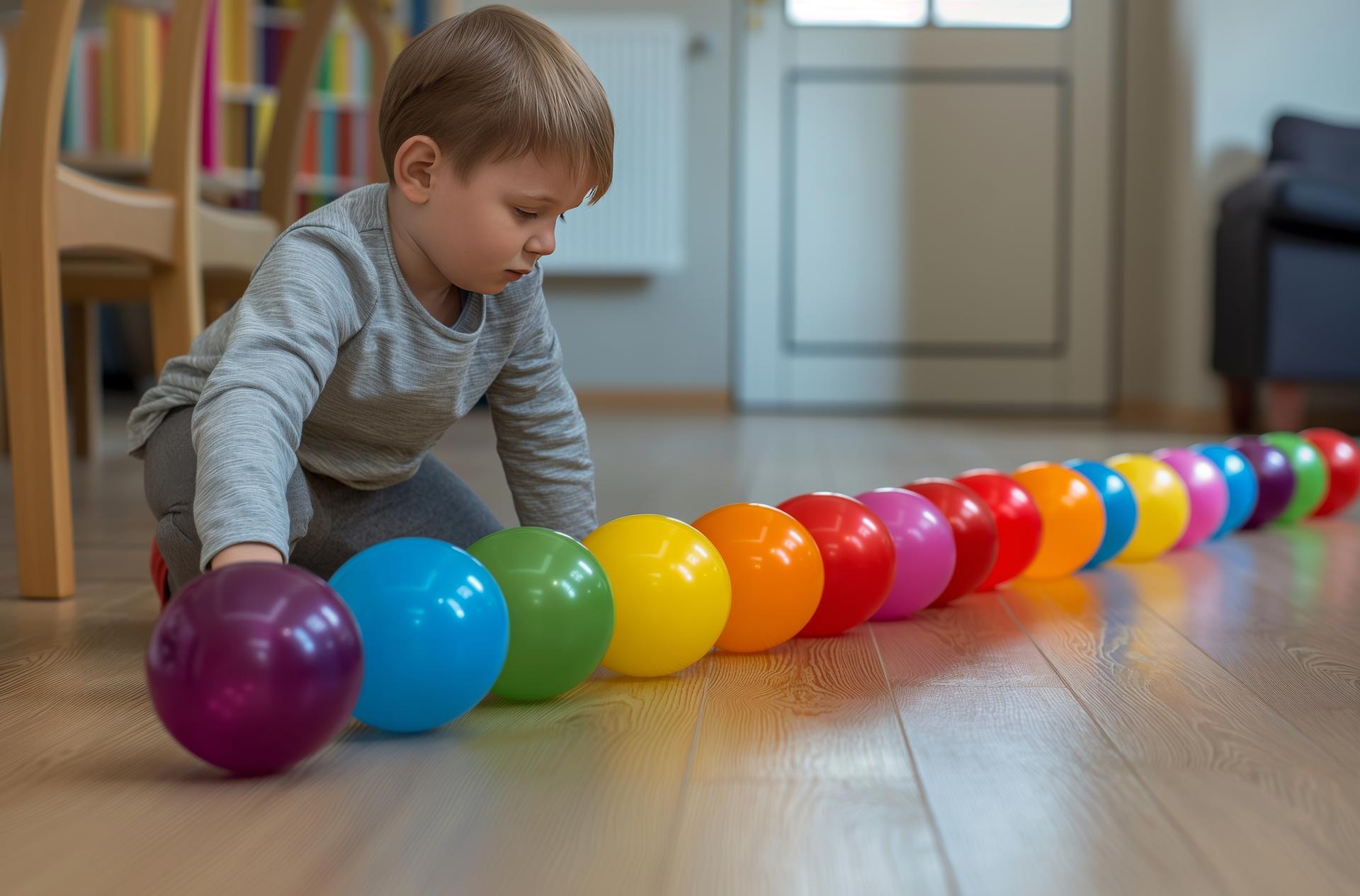Back To School
The ABA Way
Getting back into the school routine can be a challenge...
Back to school is approaching whether we are ready for it or not. Going back to school brings a variety of emotions for both you and your kiddo. Whether this is the first or twentieth experience with back to school, these emotions and feelings can show. Here are a few tips to help you and your family prepare for this exciting transition!
1. Prepare Early
Let’s set our kids up for success by prepping early for school time. Have open and honest communication with your child about the routine, environment, and expectations about school. Preparation looks different for each family. Do what works best for you and your family to prepare.
2. Visit the School
This tip can be especially helpful if your child is going to school for the first time, a change in school buildings, or changing districts. Visiting the school allows your child to get familiar with their new environment. You will also be able to meet faculty members, providing a familiar face for your kiddo on the first day of school.
3. Communicate with Staff
Inform staff about possible barriers your child may have when considering the school setting. Discuss plans and strategies that will accommodate your child while setting them up for success. Communicating with staff will not only keep them informed, but it can also help ease your mind as your child transitions into school.
4. Re-Establish Routines
This tip goes hand-in-hand with our first tip. Re-establishing routines helps your child prepare for the upcoming transition. Communicate with your child about their school schedule, how they will get to and from school, whether they will be attending half or fulltime, changes in morning or night routines and other possible changes in their daily routine. It may be helpful to practice this routine the weeks leading to the first day of school to ease through the transition.
5. Set Expectations
While communicating about changes in routine, consider communicating about expectations with your kiddo as well. Some topics of discussion may include grades, extra curriculars, expectations of the classroom, and any other expectations you may have. Encourage your child to communicate any expectations of you they may have during this transition. This open communication invites a trusting and loving relationship.
When following these five steps, the transition into the school year can go smoother for both you and your child. A change in routine can be taxing for everyone, patience and kindness can go a long way during this transition.
Learn More about ABA Therapy
ABA Therapy combines Functional Communication Training and Script/Script Fading strategies to empower children with autism to express their needs effectively and connect with others in meaningful ways.
Setting realistic goals in ABA therapy is a collaborative and dynamic process that combines professional expertise with family insight. By focusing on the child’s developmental stage, prioritizing meaningful and measurable goals, and maintaining flexibility, families can create a roadmap for success. With patience, persistence, and partnership, these goals become steppingstones toward greater independence, improved quality of life, and a brighter future for the child.
Emotional regulation involves the ability to monitor, evaluate, and modify emotional responses to meet the demands of a given situation. It encompasses recognizing emotions, understanding their causes, and implementing strategies to manage them. For individuals with ASD, emotional regulation difficulties may manifest as heightened reactivity, impulsivity, or meltdowns when faced with stressors. These challenges are often rooted in difficulties with communication, sensory processing, or coping mechanisms. ABA interventions focus on breaking down emotional regulation into teachable components, using reinforcement and other behavior-modification techniques. The goal is to equip individuals with the tools they need to navigate emotional experiences and respond constructively.





